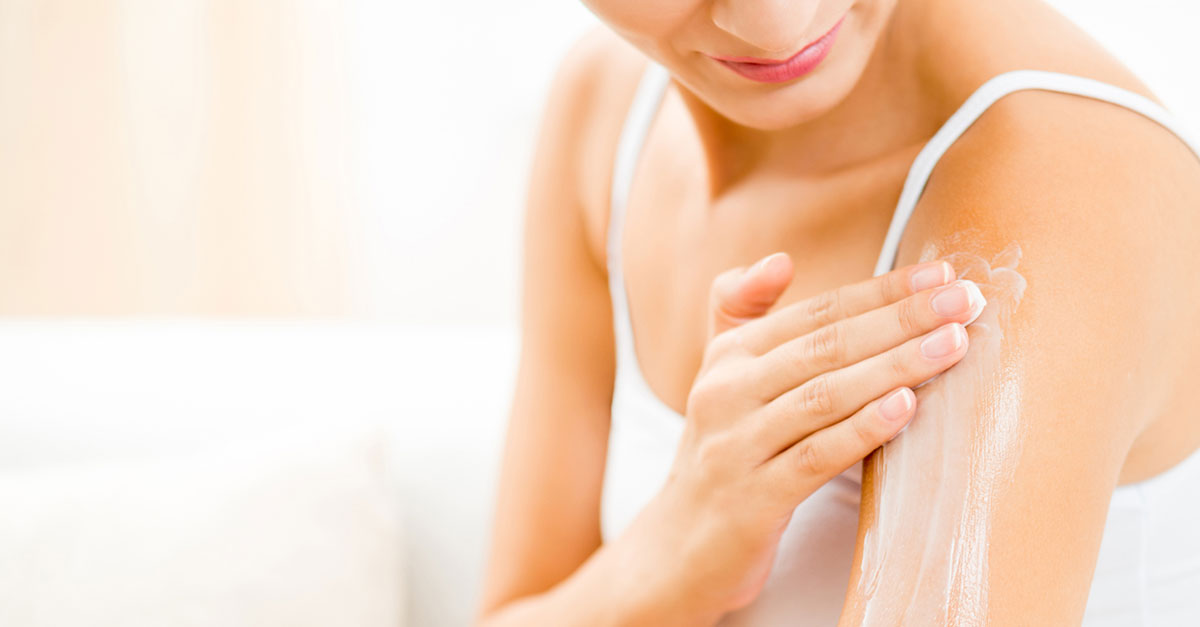It’s almost summertime and that means time for short sleeves and showing more skin. For many people this time of year causes stress because they are embarrassed by little pink- or flesh-colored bumps on their arms that some call “chicken skin.” Keratosis pilaris, the technical name, is a very common and medically harmless genetic condition that affects an estimated 30%–50% of the adult population and approximately 50%–80% of all adolescents. It is more common in women than in men, and is often present in otherwise healthy individuals.
Keratosis pilaris is caused by a buildup of keratin, which clogs the opening of the hair follicle and forms hard little plugs. Keratin, by the way, is a protein in our skin that protects us from infections and bacteria. We need keratin to maintain our immunity, so it serves an important function.
This annoying skin condition, which typically begins during childhood, can also show up on the tops of the thighs and on the buttocks. Many people grow out of it, but those who continue with it during adulthood may notice that it is worse during the winter, when the air is drier, and that it can completely clear up during the humid summer months. This condition is also more common in those with eczema and other atopic (allergy-related) skin conditions.
There’s no magic cure for keratosis pilaris, but there are many ways you can help reduce the visual and physical symptoms with a treatment regimen that includes proper skin hydration, exfoliation, and good nutrition to support healthy skin from the inside out…
- Bathe with warm water rather than hot and limit your time in the water to maintain your natural skin oils.
- Use cleansers and soaps that contain added lipids. Look for coconut oil, shea butter, jojoba and/or squalene in product ingredient lists.
- Apply a thick shea-butter- or coconut-oil-based moisturizer to the skin immediately after bathing and repeatedly during the day, as needed.
- Run a humidifier in your home to add moisture to the air.
- Remove dead skin cells from the surface of your skin by exfoliating with keratoytic (keratin removing) agents. Choose creams and serums that contain acids such as glycolic, lactic acid and/or salicylic acid. For additional exfoliation, apply topical retinoids. These products will help to prevent the hair follicles from getting plugged up. (With this condition, a chemical exfoliation is preferred over a mechanical one like salt or sugar scrubs.) Women who are pregnant, nursing, or may become pregnant should avoid topical retinoids.
- Include ample Omega-3 fatty acids in your diet. They provide the skin cells with the lipids they require to maintain moisture and also reduce inflammation. Aim for two servings of fatty fish per week. You can also get Omega-3’s from plant sources like walnuts, flax, and chia seeds.
- Feed your skin the right minerals. Magnesium and zinc support skin integrity. Spinach, nuts and seeds are good sources.
There can also be an allergy or food sensitivity component to chicken skin, as well as some genetic factors and, probably most importantly, a microbiome connection. But that’s a blog for another day—there’s way too much to go into here.
For those who have exhausted all of these healthy lifestyle approaches and still suffer, consider laser treatments. Hair removal using Intense Pulsed Light (IPL) is an excellent choice because it targets the hair follicle, shutting it down so no clogging can occur. Our hair follicles each grow in different phases, so it may take several sessions before you see results. Four treatments are typically recommended. (These treatments would not be covered by insurance since there is no medical reason for them.)
Chicken skin is an embarrassing and sometimes uncomfortable condition that may prevent you from feeling your most confident. Although there is no cure for it, the suggestions I presented here will certainly help to soften and smooth the skin and help you to feel comfortable in your own skin this summer.
References: https://emedicine.medscape.com/article/1070651-overview
Click here to read Ginger Hodulik Downey’s book The Esthetician’s Guide to Outstanding Esthetics.


